This is a breakdown of the common steps I take on any project to create consistent and engaging visuals. Whether I'm working with internal teams or external support the framework of my AD interaction remains relatively unchanged, it can however naturally adapt to the specific circumstances of each project.
Regardless of the artists I'm working with, my approach to Art Direction remains largely consistent but allows for necessary adjustments based on the project's unique context. As teams become more familiar with my expectations, the process naturally becomes more collaborative, as I firmly believe that every participant in a project can offer valuable perspectives that contribute to the final outcome.
Before providing any AD guidance, it's essential to address a couple of key factors.
KNOW YOUR STAKEHOLDERS
(executive producers, producers, and the target market)
Producers often have a project vision influenced by factors that may be unknown to the art director. It is crucial to understand and align with the needs and aspirations of these key team members. In a professional content creation environment, it is not solely about expressing personal artistic preferences but rather about meeting the project's visual requirements by utilizing tools such as product vision, consumer research, and team skills. Producers of any level play a crucial role in shaping a project's direction.
While the art director doesn't directly report to the target market, their opinions hold significance. However, it's important not to let market preferences hinder proper design decisions, but rather to incorporate them in a balanced way. For example, if the target market finds the color red offensive despite personal preference, incorporating their insights enables more informed decisions that enhance the project's potential for success. But if red happens to be a required brand color, an art director needs to account for all of these conditions. It's a balancing act.
KNOW YOUR TEAM
While my art direction approach emphasizes being hands-on when necessary, effective delegation is vital in the fast-paced and often chaotic nature of typical project pipelines. Your team becomes an invaluable ally in overcoming obstacles during project creation, and building honest and productive relationships with them is key. Throughout my career, I have collaborated with individuals of diverse skill levels. Regardless of experience, I strive to identify their strengths, taste preferences, and goals they wish to achieve with their output. I value the unique voices that each team member brings and avoid a one-size-fits-all approach when interactions take place.
Although the art director holds the final decision-making authority for cohesive visuals, it is crucial to acknowledge that no art director possesses all the answers. To avoid potential pitfalls, I cultivate a highly collaborative environment that actively encourages every team member to contribute to the creative process. This inclusive approach enables valuable insights from each individual, fostering a genuine sense of pride in their work and ensuring their voices are truly heard. Throughout my career, this approach has effectively communicated to my team that they are valued contributors, not merely technicians. Sometimes just the simple act of teaching a new technique goes a long way as it conveys how much I value each team member and their growth potential.
DEVELOP A VISION
When developing a new product, it is important to not overextend a budget before any production begins. Prior to investing heavily in team building or tools, it is cost-effective to gather competitive references, explore rough concepts, and analyze visual decisions made by competitors. In some cases, providing education or tutoring may also be necessary to effectively communicate your proposed ideas to the team.
NEW PRODUCT
Please note the following examples do not represent one project, but actually are from multiple projects to show a range of pre-production prep.
1. REFERENCE SOURCING
After identifying a few key pillars for potential character designs, relevant references were sourced to help narrow the decision-making process. These references were carefully selected to align with the specific categories and criteria established, allowing for a more focused and informed design direction.

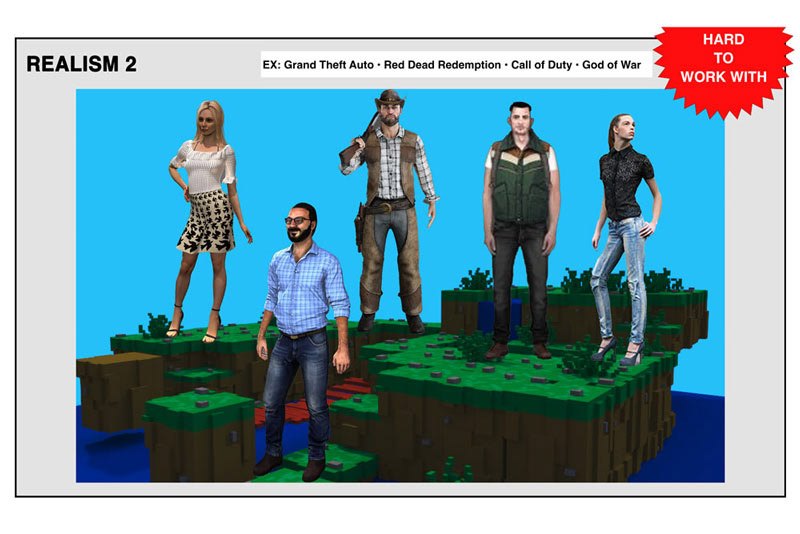
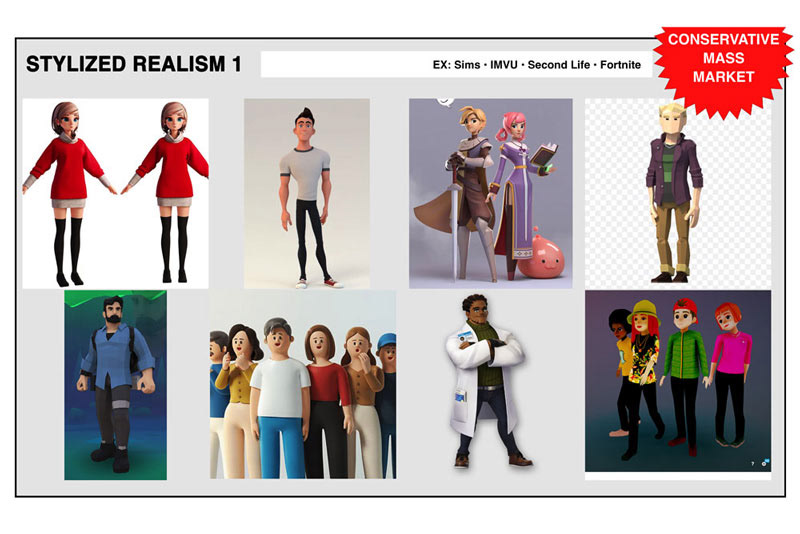
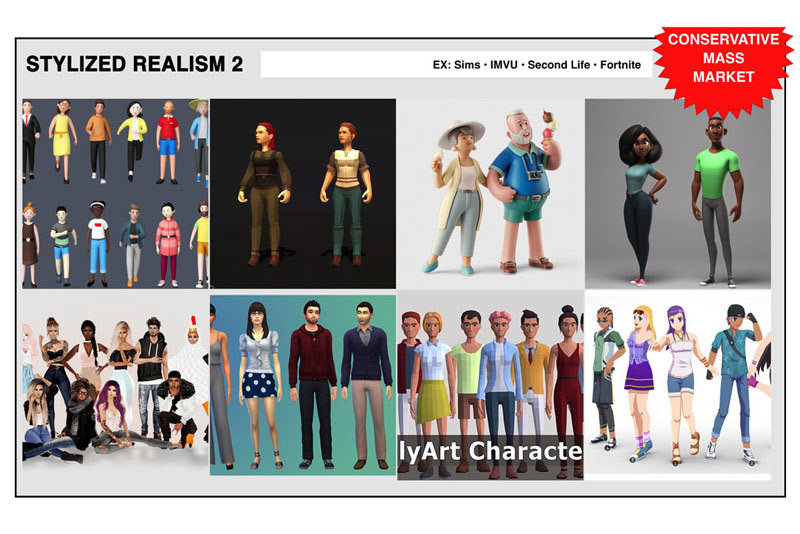

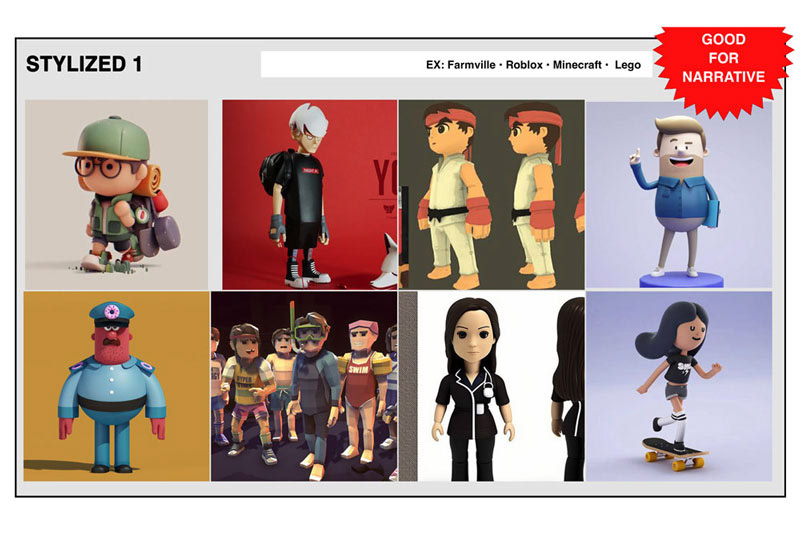
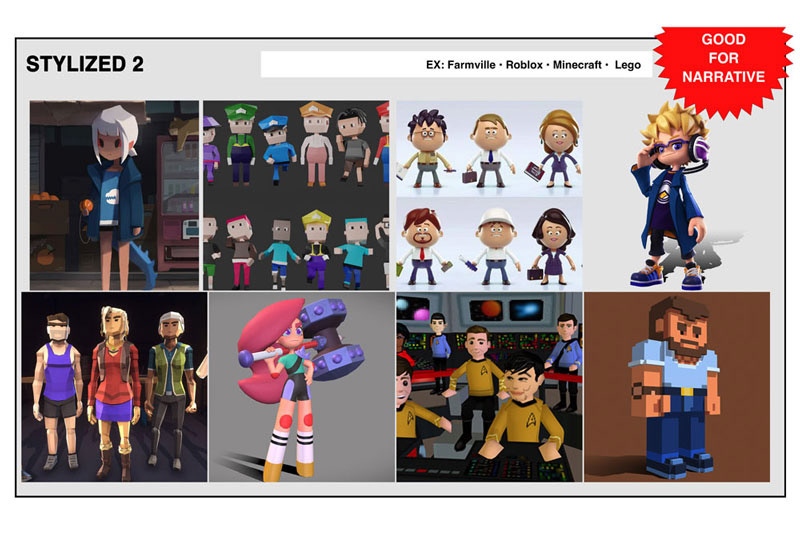

copyright for reference images belongs to their respective creators
2. MARKET CONSIDERATIONS
For this project, I conducted extensive research on the cultural significance of colors, particularly among people from India. To ensure sensitivity to Indian culture, I curated diverse resources and collaborated with the Indian production team to finalize my findings. Together, we refined my color hypothesis, resulting in a working color guide. This guide not only ensured appropriate color choices but also eliminated the guesswork, saving valuable time.
3. COMPARATIVE ANALYSIS
To familiarize the team with the emerging trend of NFT images, I conducted an in-depth exploration into the potential visual aspects that contributed to the success of top projects in this field. While it's true that the initial hype drew attention, from a visual standpoint, I discovered intriguing insights that could be applied to my workflow.
Analyzing competitors in this manner, much like dissecting a painting, helps identify the key components that potentially contribute to their success and offers insight I can incorporate into my team's work. While such deep dives may not always be feasible due to project constraints when they are conducted, they provide valuable inspiration and guidance that significantly enhances the project creation process.


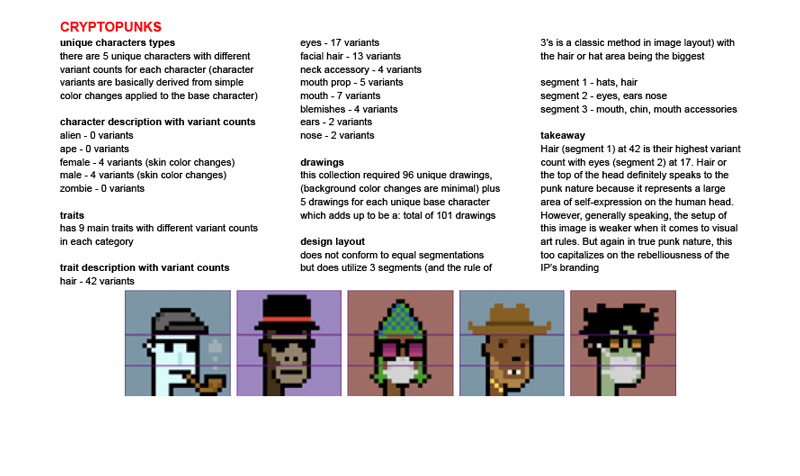
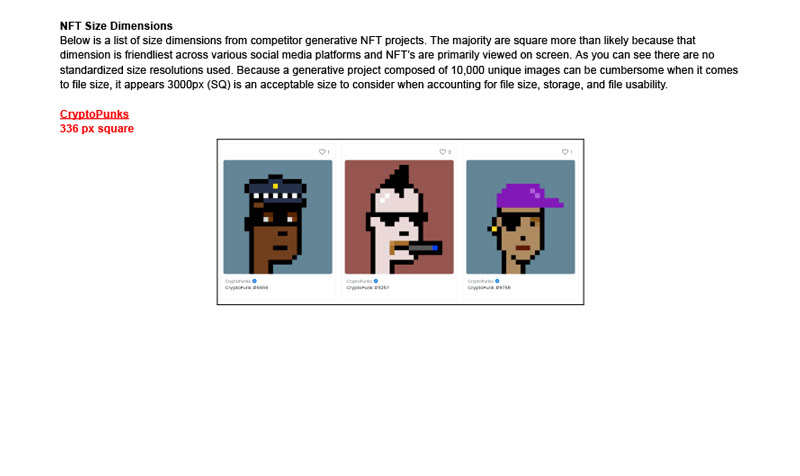

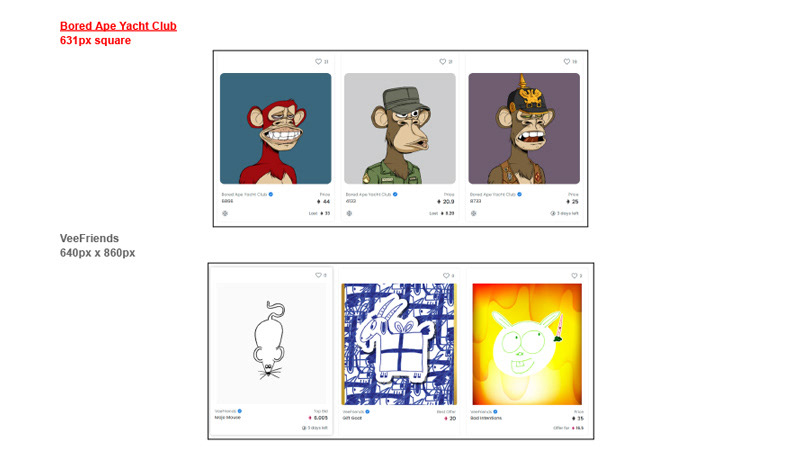

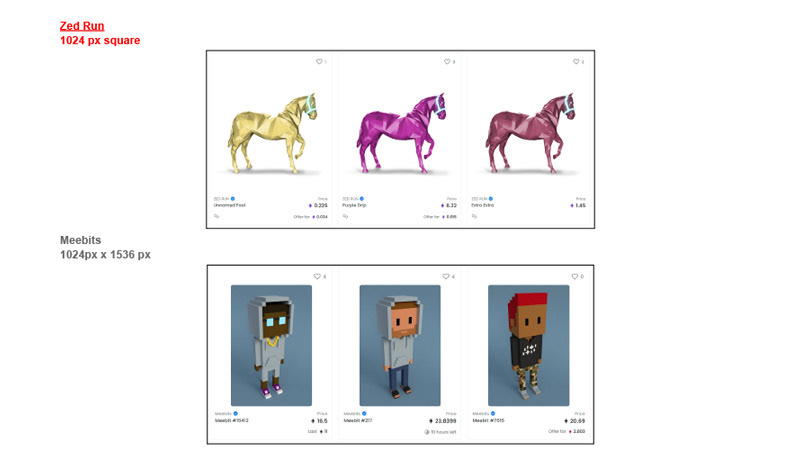

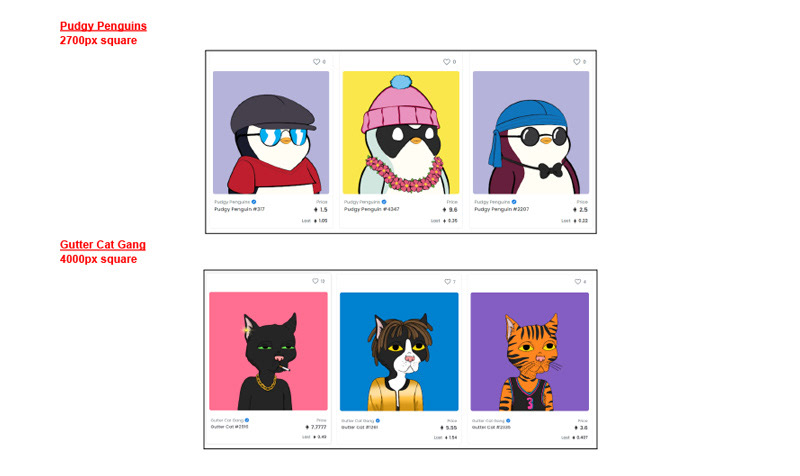
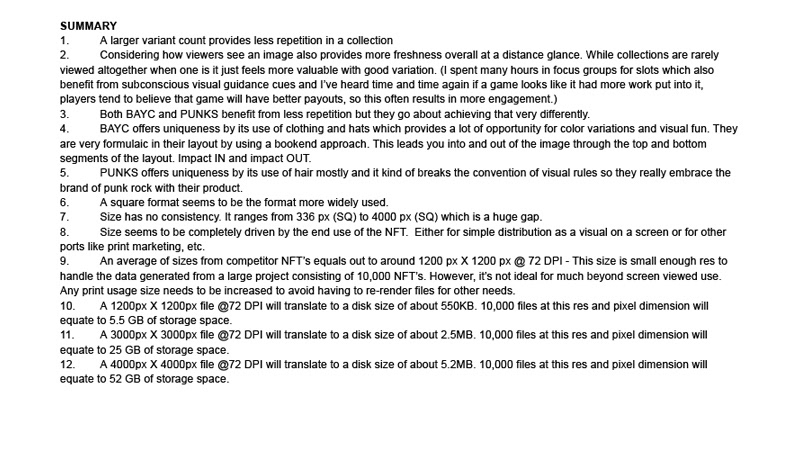
NFT Analysis
4. GUIDES
Guides serve as valuable tools for establishing expectations, whether for repetitive content or standardized workflows. They can range from instructions on specific painting techniques to guidelines for font usage. As a project evolves, these guides evolve into comprehensive product style guides. However, during the development stages, they serve as excellent resources for keeping team members aligned with a consistent vision.
While one-to-one interaction remains essential, having guides readily available allows for less micromanagement and fosters a sense of trust in team members' professional judgment. This approach often encourages new and fresh perspectives that can be incorporated into the overall identity of a product. Guides play a vital role in empowering team members and promoting a collaborative environment where their contributions are valued.
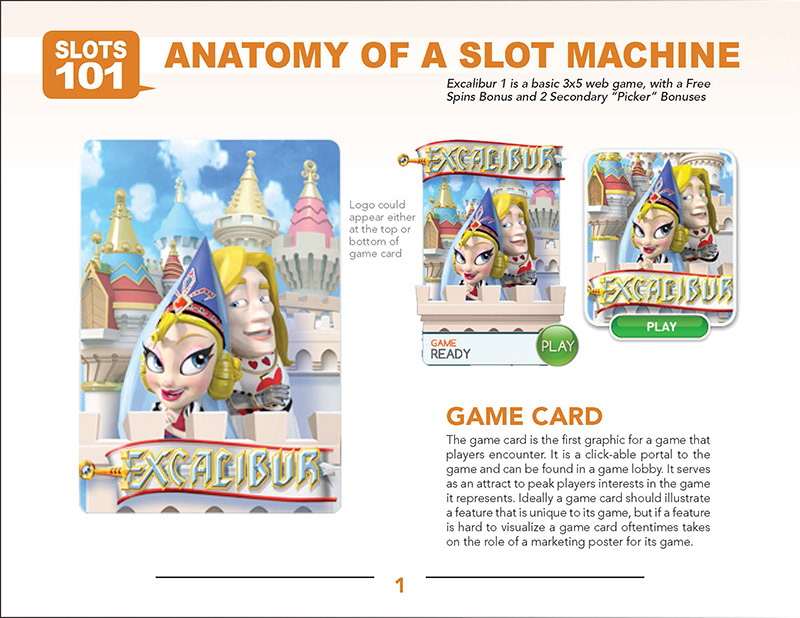
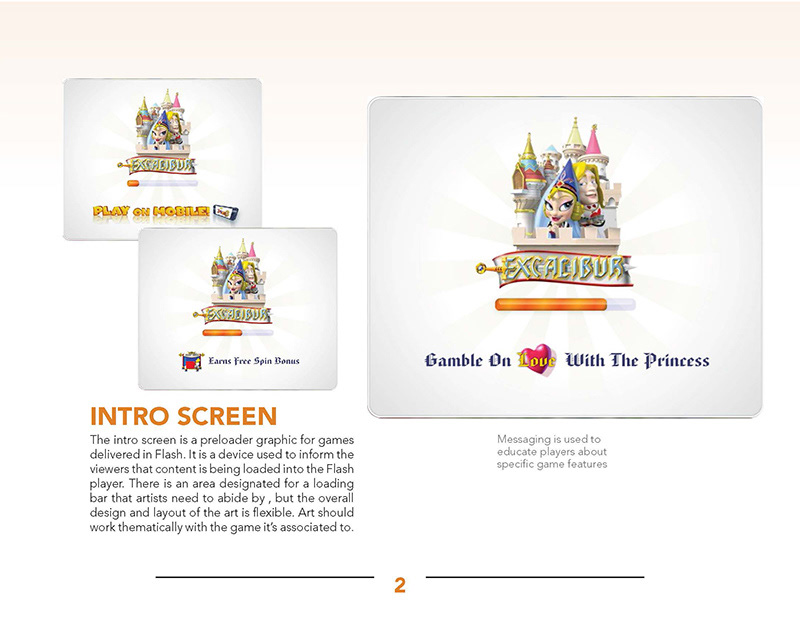
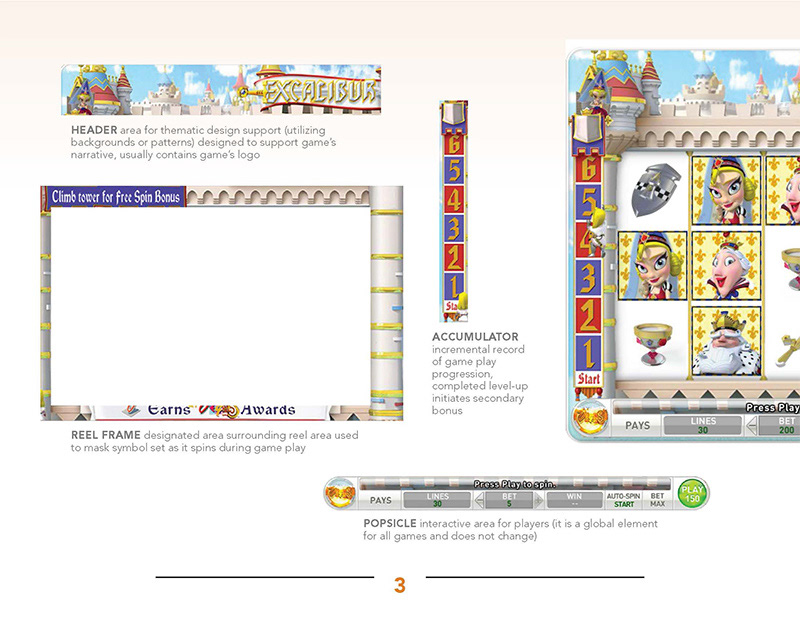


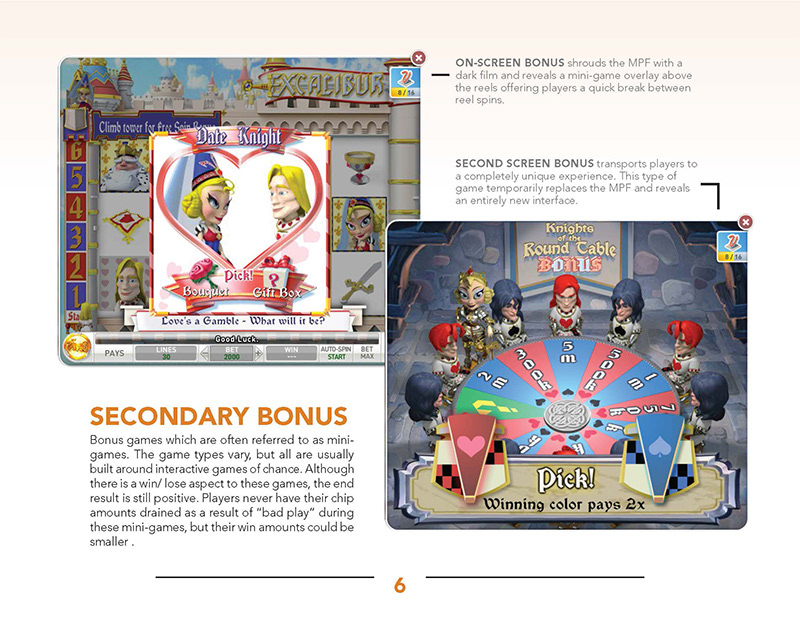
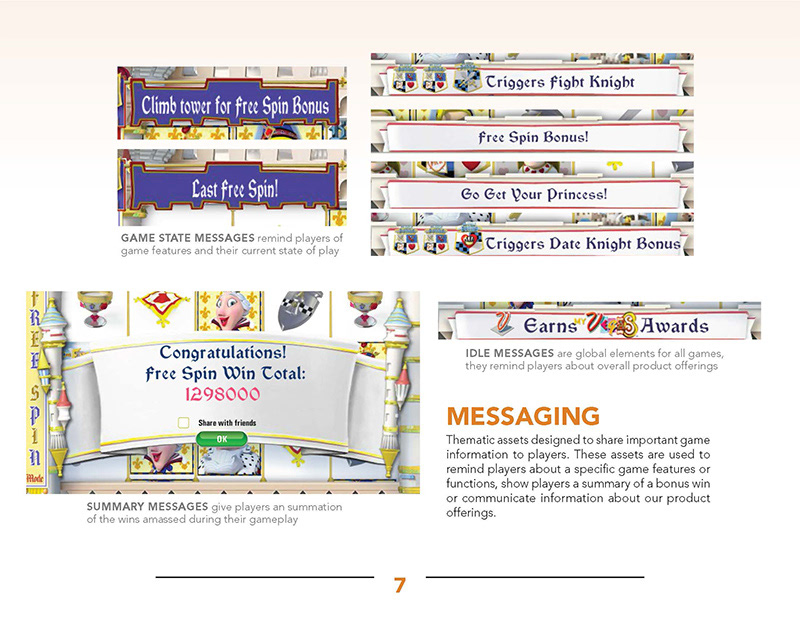
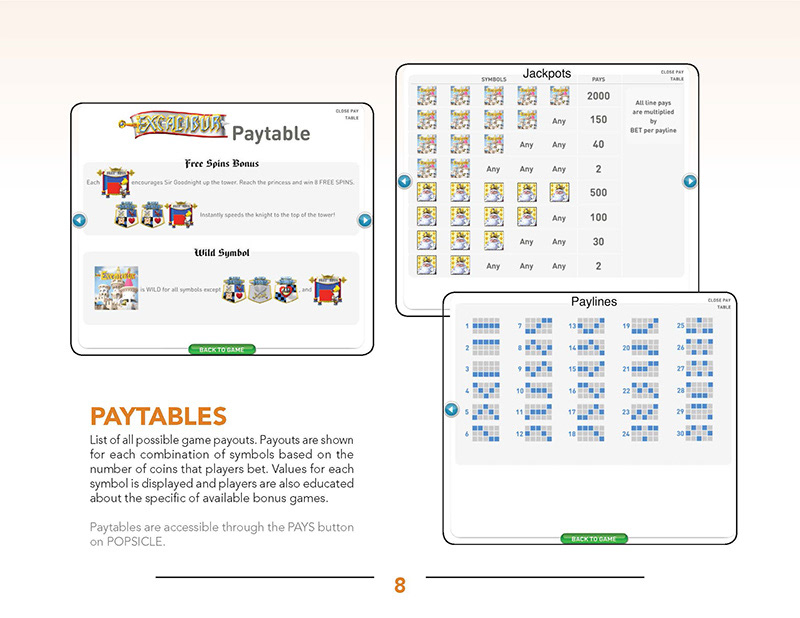
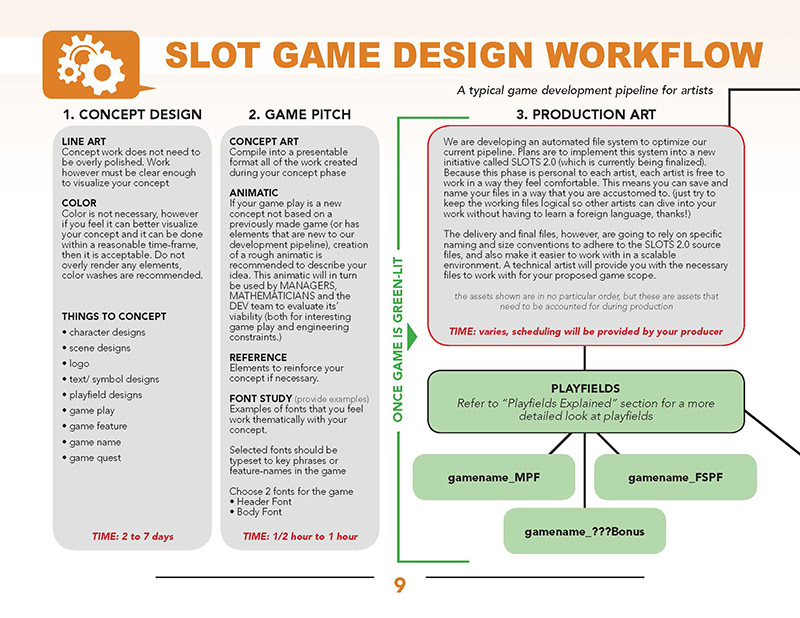



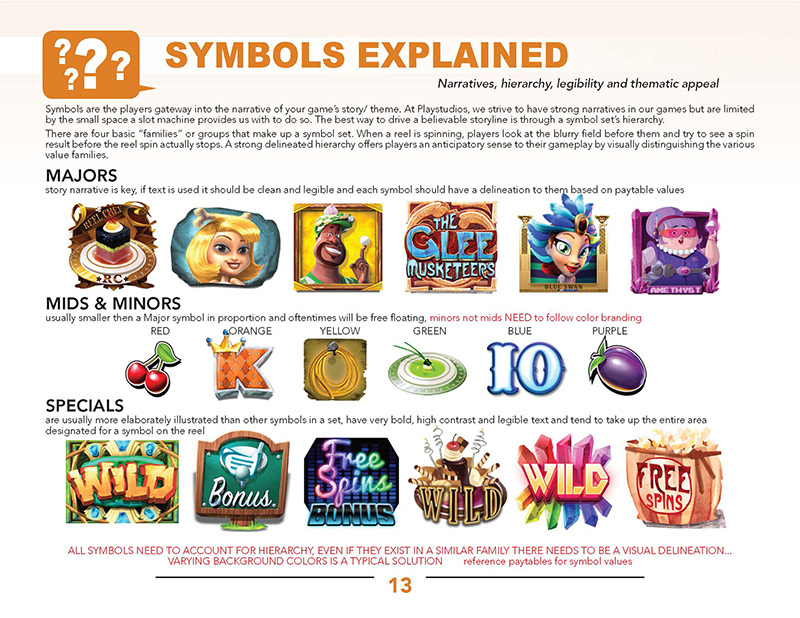
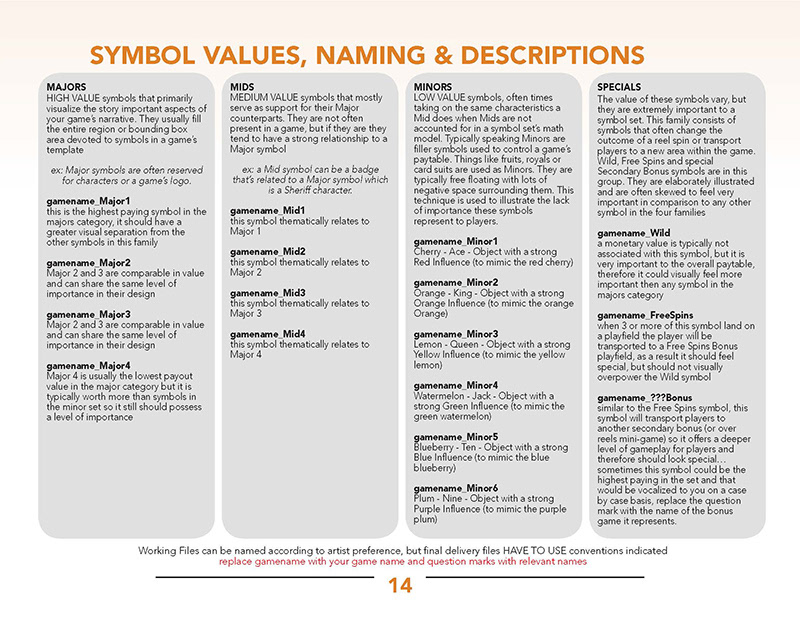
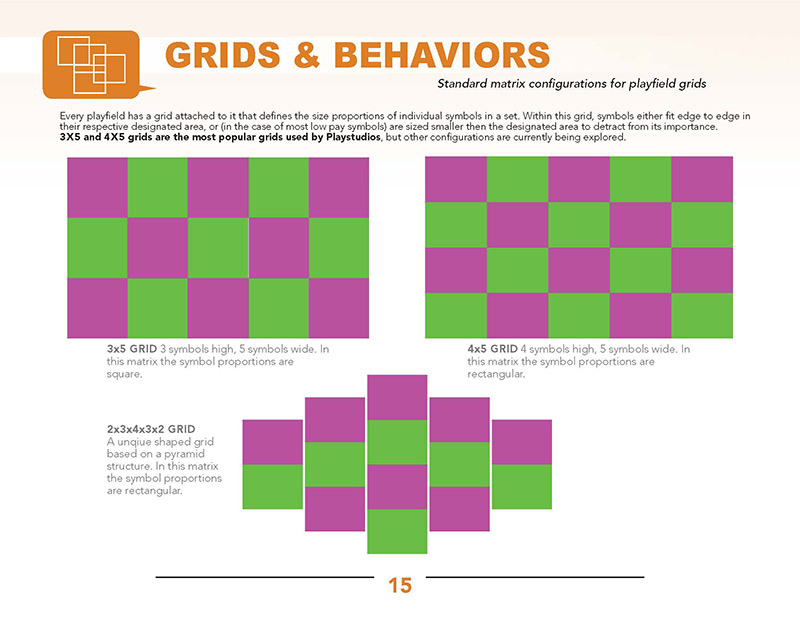
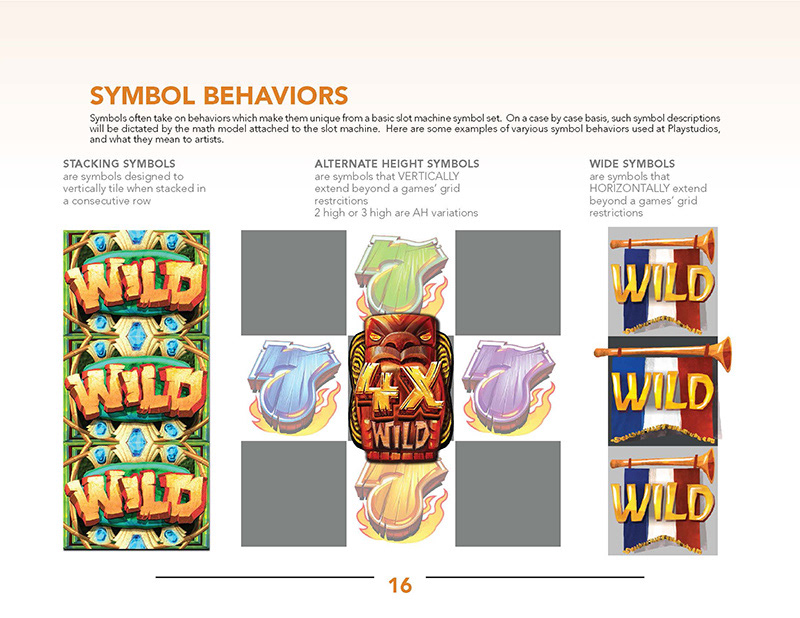
Art Guide for Content Creators: Unifying both In-House and External Support. This guide was also used to onboard new employees.
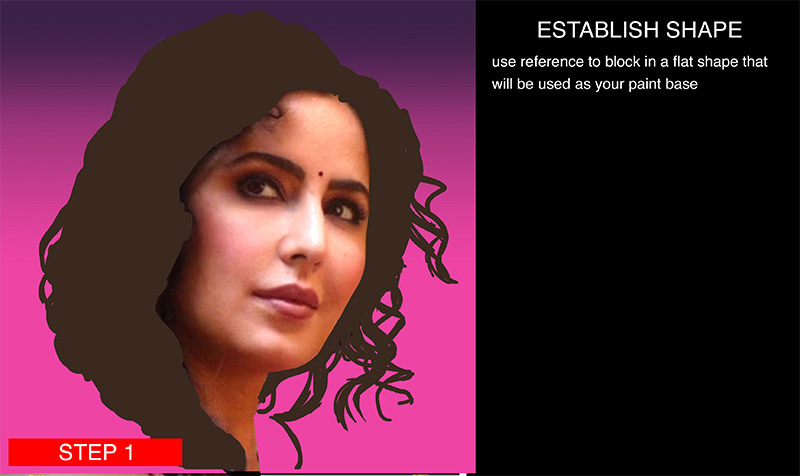
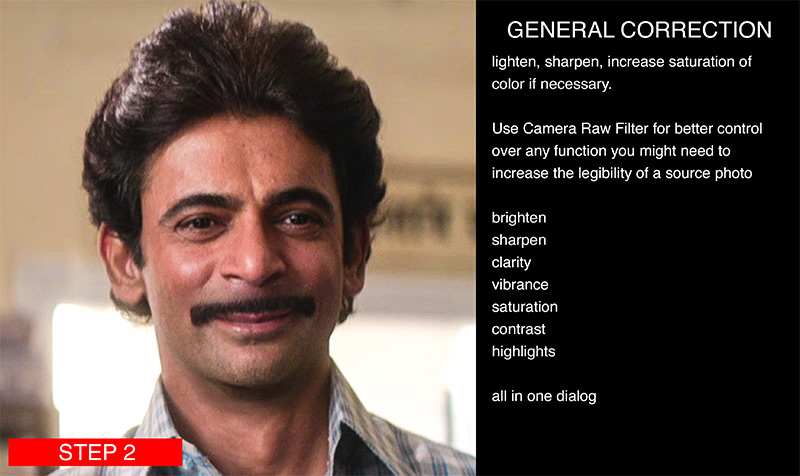
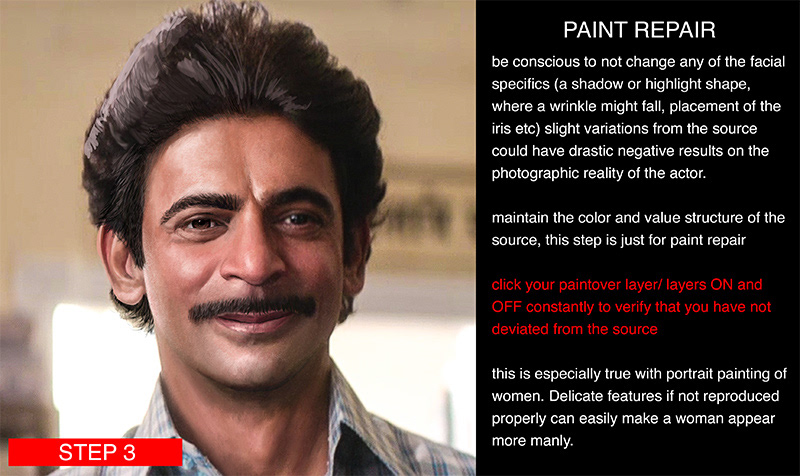

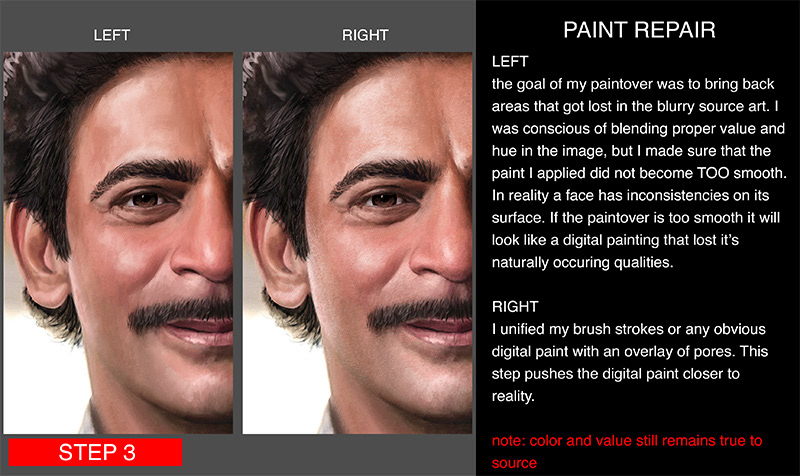



Painting Guide for Production Team created to avoid render discrepancy between multiple artists.
UPDATING EXISTING PRODUCT
In cases where the role of the art director is to enhance an existing product, similar steps are followed as in a new product. However, in this scenario, the art director must rely on their ability to sell new ideas to teams already invested in the work they have produced. It's not about undermining previous decisions, but rather leveraging fresh perspectives to drive a rejuvenated vision.
While I don't have many examples to share due to the proprietary nature of my updates to existing products, I can provide a small example of how I would visually enhance a game I was playing at the time I made this, DCU Online. Inspired by the visually stunning approach of Sony Animation's "Into the Spiderverse," I envisioned incorporating similar elements into the DC game. Please note that without any knowledge of Daybreak Games' pipeline, I cannot determine the feasibility of these changes. However, I believe that these simple visual enhancements could breathe new life into the game and create an immersive and captivating experience for a refreshed audience.
a concept rendering I made that incorporates the same ideas of shape and value simplification to enhance legibility and improve visual clarity
PAINTOVERS, CONCEPT IDEATION
While it's not always necessary for an art director to be constantly hands-on, it is important for them to have the capability to do the work and not be limited to delegation alone. Effective communication plays a significant role in conveying ideas, and sometimes artists prefer visual representations rather than detailed emails.
Here is a link showcasing some paint-over examples I have created to enhance the visual range of a product.
Scattered throughout the other pages of my website, you will find additional examples illustrating how I actively engage in the creative process to communicate my vision effectively.
an example of rough drawings I provided to guide a game logo design
I created this rough choreography animation for a fight action to guide the project animators. During this stage, the approach is usually less prescriptive, as discussions and input from experienced animators allow them to showcase their expertise. However, this animation also served as a means of communication with other departments, including the executive team so I had to be more descriptive with my example.
TEAM MORALE
During the course of a production, it's not uncommon for individuals to experience lapses in output or a sense of boredom, especially when working on the same project for an extended period. As an art director, it's important to counter this and maintain productivity.
In addition to providing clear guidance through redlining, paintovers, or detailed notes to ensure quality, an excellent opportunity to remind team members that their roles extend beyond being mere technicians can help build morale and team unity.
To rejuvenate engagement, an art director needs to consider the human aspect of development.
• Assign a new task, such as asking a background artist to try their hand at character design. This not only provides a fresh challenge but also encourages skill development and growth. Most importantly don't just assign the task and walk away, take this time to share knowledge. You may uncover a hidden skill in a team member.
• Engaging in group learning sessions can also be beneficial, allowing team members to share their work, techniques, or approaches. This fosters a collaborative environment where everyone can learn from one another, sparking new ideas and invigorating the team.
•Furthermore, giving artists a chance to showcase their personal creations done outside of work can introduce unique perspectives and ideas into the production pipeline. Sometimes, these outside influences can break a creative rut and inspire innovative solutions.
•Assemble presentation decks to showcase team accomplishments. This allows you to share the successes your team has achieved, which can often be overshadowed by the project itself. By sharing these achievements with others, you can bring attention to the valuable work of your team members and communicate the impact and contributions they have made to the organization or project.
By implementing these strategies, you can refresh team members' roles, invigorate their creativity, and create a more dynamic and productive environment
EFFECTIVE MANAGEMENT
Again the human aspect of development is crucial, as team members are important because they bring unique skills and personalities to the table. It is important to treat them as professionals who understand their responsibilities and acknowledge that they have lives outside of work. For example, if someone needs last-minute time off, there is no need to get upset unless it becomes a recurring pattern. Allowing team members to live their lives fosters camaraderie and team unity, where others willingly step up to help out. Effective art direction management ensures team members are aligned thus creating a supportive environment.
Effective communication of project goals is a crucial responsibility of an art director. It ensures that team members have a clear understanding of the project's objectives and fosters alignment with other departments that may not have direct insight into the project. By sharing this information, the art director keeps all the moving parts connected and working together towards a common goal. This alignment promotes collaboration, minimizes misunderstandings, and maximizes efficiency, ultimately leading to the successful realization of the project.
KEEP IT FUN
Game development is an inherently dynamic and exciting job, but it can become monotonous if an art director fails to engage with their team on a personal level. While the needs of the project and organization always take priority, it is equally important to consider the individual needs and enjoyment of team members. Neglecting their satisfaction can lead to decreased productivity.
In a remote work environment, maintaining team morale can be challenging, but simple initiatives like organizing an Amazon watch party can help break the monotony and foster a sense of togetherness. Similarly, in an on-site setting, something as simple as going out to lunch with the team can establish a connection that makes the work more enjoyable, even in the face of demanding deadlines or unexpected changes.
Recognizing the importance of personal connections and finding ways to inject fun into the work environment is crucial for keeping team members engaged and motivated.
SUMMARY
By prioritizing both the needs of the project and the well-being of the team, an art director can create an environment where creativity thrives and productivity remains high.
